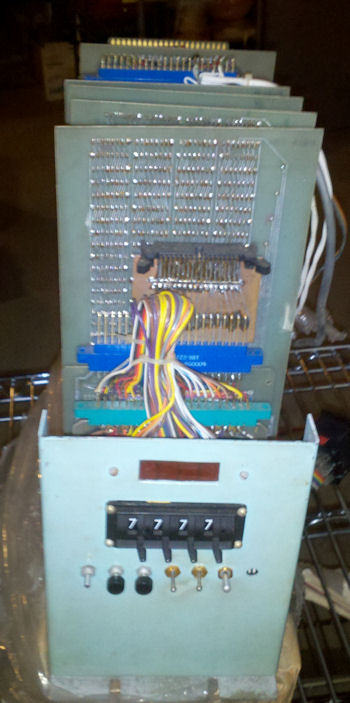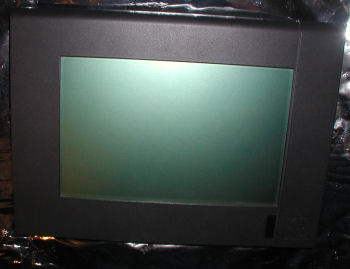Intersil 6100 PDP 8 Homebrew System
SHARE |
|
  Intersil 6100 PDP 8 Homebrew System
Intersil 6100 PDP 8 Homebrew System |
by Bill Degnan - 03/28/2013 23:40 |
 Took a few photos of a homebrew Intersil 6100 PDP 8 Homebrew computer built by William F. Dudley Jr. which he donated to MARCH.
More photos I did not get a chance to photograph the ROM card (need to download the 2708 ROMs) nor the processor card. The front panel is a primitive four-digit octal dial. Here is a thread from Mid-Atlantic Retro message board: William F. Dudley Jr. donated another wonderful box of homebrew parts to MARCH: a new unused Intersil 6100 eval kit, several PHI-deck digital cassettes (2 in the original blue eval cases), spare memory cards and schematics. The intention was to build a PDP8 using the 6100 chips and the PHI decks emulating DECtapes to run OS8 and all the PDP8 software. Each memory card is 4k of 12 bit DRAM, 8 max per system. They're all spare parts for the PDP8 he built. That's the "mystery machine" from a few weeks ago, so MARCH now has a homebrew PDP8! Bill Dudley identified the "mystery machine" as his. The flip-chip backplane was a clue that it is DEC compatible! > That's it. PDP-8 using the 6100 chip set. > > Oh, and the LEDs are actually HP dot matrix LEDs > with builtin counter/decoder/driver/LED. > Quite high-tech for 1976. > > If it's got that "flip-chip" bus, a baby blue front panel, > thumb wheels, and those same memory cards, then that's it. Later he added more info: We'd need the following: (to power system) 5v, +/-12v serial terminal (ADM3A, TTY, etc) and then, if it "works", you'd get a simple "ROM monitor" program that allows you to examine memory etc. We implemented "extended memory" for our PDP-8, i.e. the ability to have up to 8 banks of 4K RAM. If you look at the actual hardware, you'll find three complete memory boards and one partially stuffed. That one is bank 7, which I *think* might have a monitor ROM burned into it. > There are two 2708's on a card in the system. I was thinking it was a > current loop set up, I can set the PC to the ROM address that I think > is written on the chips, attach to a terminal (rs232 or current loop) > and see what happens...come to the workshop if you want to do this with me. It's not current loop, I built it to do RS232. That thumbwheel switch on the end of the ribbon cable is the baud rate selector: 110,150,300...9600 are the probable values. Likely the reset button will cause execution to begin in the monitor. Reply |
|
Resources:

Popular Topics and FAQs
Past Issues:
Corp Mod G400 pic3

This image was selected at random from the archive. Click image for more photos and files from this set.